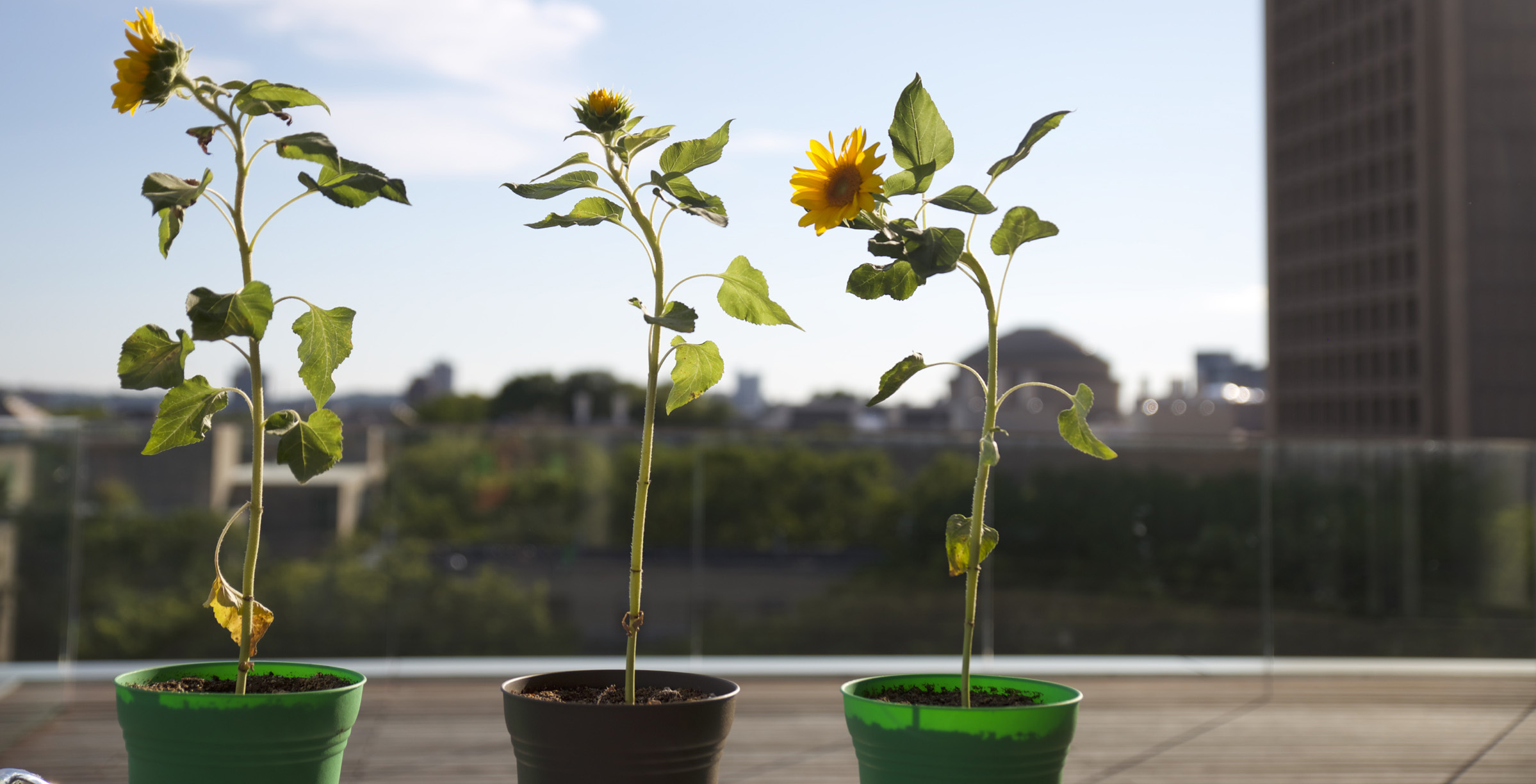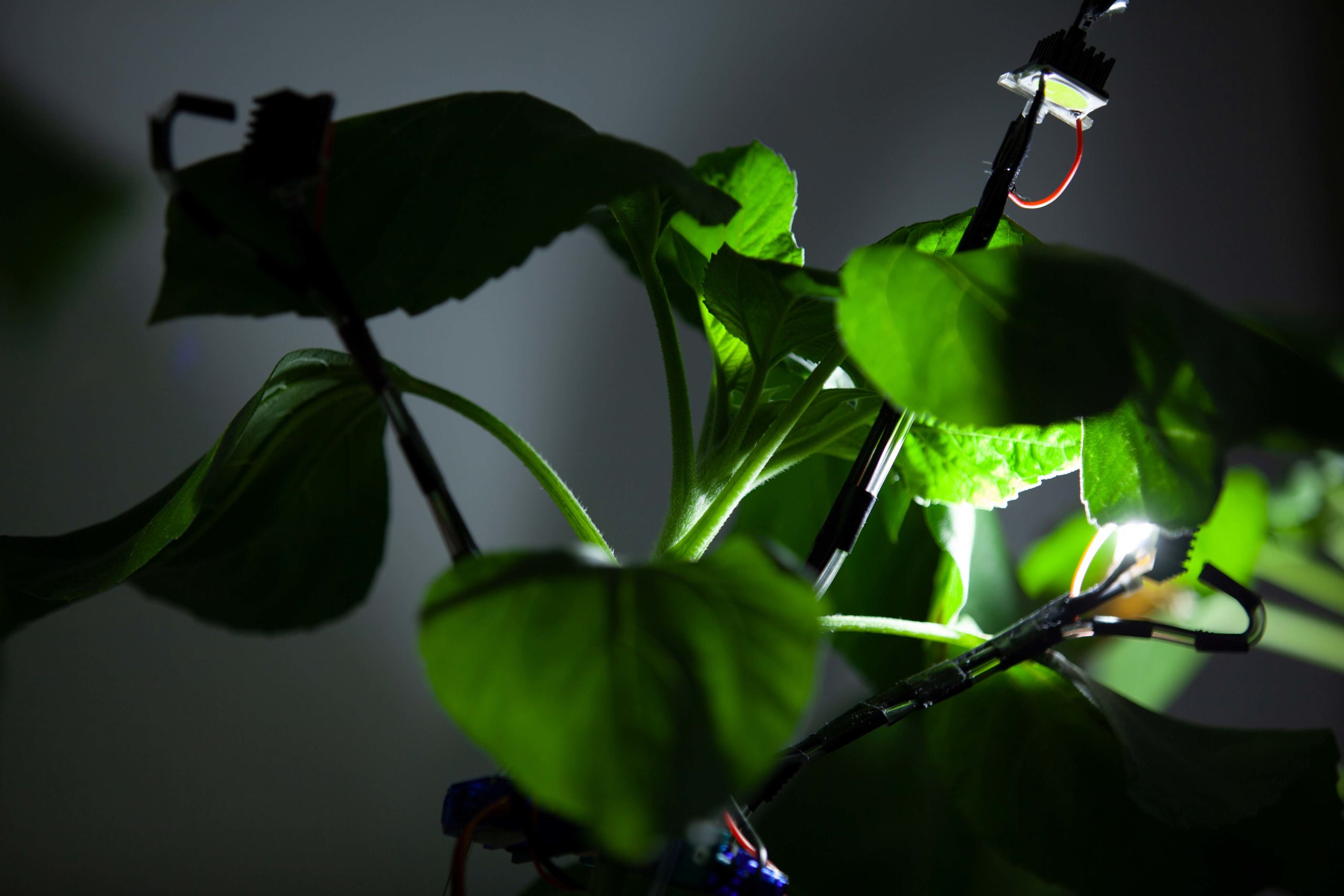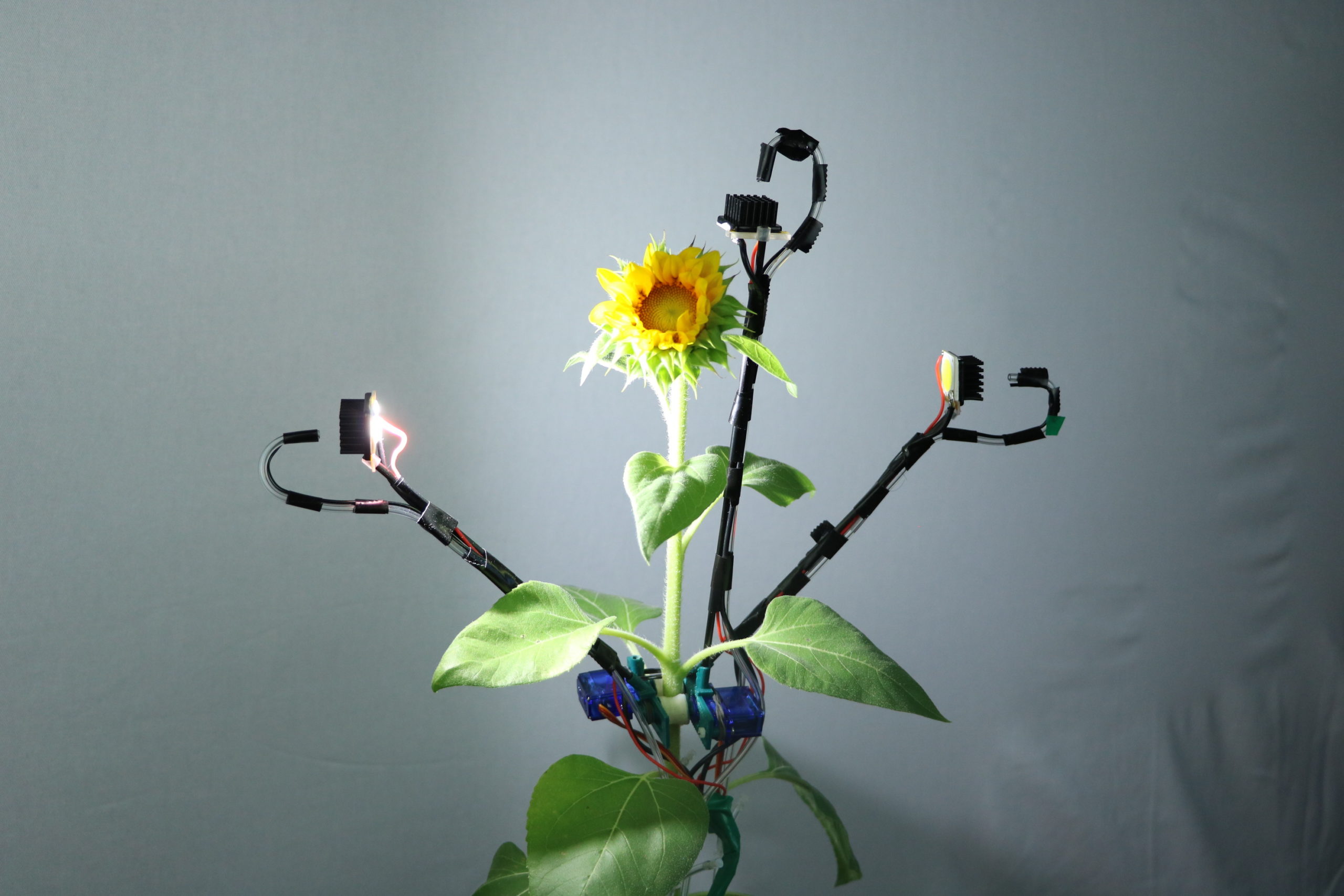
HELIOBOTS
Robot driven Arbortecture
Heliobots are robots that live on the stem of woody plants and grow these plants into controlled architectural shapes. The robots are pre-programmed with software instructions that are executed through onboard directional lighting. A single robot automatically moves up the stem, proportional to a plant's growth each week and steers the morphological growth towards a certain form. As opposed to the prevalent approaches, the system is designed to be self-sufficient without needing a scaffolding architecture around a plant system. Such robots pave a way for self-growing, self-repairing and fully living architecture in contrast to unsustainable concrete structures.
As opposed to part-artificial/part-living or fully artificial/synthetic approaches, we believe the architecture of the anthropocene is fully living -- Human life subsumed in nature with no hierarchies between human/nature. In Northeast India, Khasi and Jaintia peoples of Shillong mountains shaped the aerial roots of Fig (Banyan) trees to create a suspension bridge. This manual shaping allowed the locals to create a structure that is not only fully ecological but is also self-repairing and self-fabricating. These bridges have lasted for more than 500 years, a lifespan much longer than the concrete bridges of today.
Grounded in these traditional anthropocentric doctrines, we propose new methods to grow architectural shapes from native plants and trees using “robotic shaping.” We developed phototrophic robots, called Heliobots, that have an ascend/descend mechanism on primary stems of plants and light(s) to power their growth. In our work, we demonstrated automatic shaping of the smallest growth units that are usually carried out manually in such practice. These are morphing, bending, and spiraling of plants carried out through robotic control, with an output that is 100% living.

In designing this system, the plant and the robot both inform each other’s design. For example, pliability, motion dynamics and growth rate of a plant play a crucial role in the design of the robot, and the following properties were desired from a plant system:
1. Strong stem (>1cm lignified diameter) with ample pliability when not lignified
2. Single stem with minimum off-shoots or branches and fast growth (> 2ft growth per month)
3. Positive and regular phototropic response
The following plants were short listed with the above properties: i. Single cane Bamboo (e.g. Moso, Temperate bamboo) ii. Helianthus Annuus (Perennial Sunflower varieties) iii. Peppermint Stick Giant Reed (>1cm cane diameter), iv. Arundo Donax (>1cm cane diameter)

To demonstrate shape control within a 45-day timeframe, we selected Russian Mammoth and Hybrid Sunflower varieties. Sunflowers were started from seeds in propagation trays. Well drained soil media was used for germination and growth (Photoperiod of 16h light, 8h darkness was maintained). Plants were subsequently removed from the greenhouse and robots were mounted for growth for an additional 5 weeks on 8 different sunflower plants, each with different growth plans. Robot locomotion is consistent in all the variants of the design i.e. parabolic wheel with one plane movement constrained through an orthodontic elastic. Each robot unit has high power LEDs with a common ground to reduce wire weights. After a period of 45 days, we observed the plant growth to match within a 95% alignment to the programmed shapes.

Previous architectural works have either used manual scaffolding or frameworks. However, such an approach of building large frameworks around shapes first is not fully scalable. Through Heliobots, we have brought the vision of building through nature within the reach of architects. On account of being the first example of robot-nature collaboration to create arboreal frames, we are confident that this trailblazing innovation is applicable to architects for a climate-friendly future.
Heliobots provide an alternative technique to be able to build ecologically directly with nature, to the extent that the built frameworks/artefacts can fully merge with the environment. Imagine leaving a number of these robots in a forest to grow arboreal frames automatically in a couple of years. While synthetic biologists have tried to edit genomes, the amount of growth control shown in our approach has never been possible before. Other approaches rely either on manual processes or directing the processes with scaffolds around the growing system. A self-building architectural process cannot start to be sustainable/scalable if it relies on a pre-built architecture around it. This is where the decision of a symbiotic robot weighs in – a climbing robot that lives on a plant, powers a plant’s growth and is able to direct it using natural biological responses to photo (light) and gravitational stimulation.
Heliobots demonstrate practical conversion of manual shaping techniques into robotic plant shaping through natural lignification of plants without needing any scaffolds. Our robots either have three onboard lights for left, right and mid growth direction or four lights in circular configuration for spiral growth. All robot parts are 3D printed with off-the-shelf components for easy sharing between the community of growers. The scale of growth can be small or large depending on the plant species and can be used for shaping furniture frames (instead of architectural scale). We envision greenhouses for growing furniture than just for growing crops, in line with ecological principles needed in this decade.

Our project’s impact has unfolded on the cultural and community level.
1) Heliobots has been shown at architecture conferences and invited to museum exhibitions around the world (e.g: at CID Grand Hornu in Belgium, Museum für Gestaltung in Zürich and many more). Shown to thousands of visitors in exhibitions in various institutions, our project has created an extremely strong cultural impact. While synthetic/industrial materials led to separation of nature and culture, Heliobots shows how the two can indeed exist together. Instead of cutting plants/trees, how can they be shaped robotically for cultural needs? What new environments (greenhouses) can we create that can use such techniques beyond crop growth? How can we strengthen our relationship with nature through such eco-linked technologies? These are some of the questions that the exhibition audience of Helibots has been asking in various venues.
2) Our project is a homage to the ancient community methods that have been utilized in the development of our robotic techniques. One of our team members from India initiated and developed the robotic techniques of Heliobots through their field trips and local experience. The work as seen today, treads between nature-culture as well as manual-robotic and has surfaced the techniques of the indigenous community to the technological world. The field of architecture has often drawn inspiration from the final form of living things. However, as shown through our project, the processes that power such growth are of equal significance. Redirecting the morphogenesis processes to produce living structures can lead us to a new self-growing, self-repairing architecture.
We demonstrated that natural building materials, when utilized in their living state, can create structures that are biologically pure and contain no unknown substances. Our project can be extended from Sunflowers to Bamboo and other reed-based plants for outdoor structures. Principles of symbiotic robot on the plant and using plant-as-scaffold also extend to other mechanisms such as applying stress to shape the plants as done in a few manual practices. For species such as bamboo, this is especially useful and can account for outdoor usage. An outdoor setup would entail gravitational based growth or higher intensity light sources and averaging between the natural and artificial light source.

Our growing robots are created using 3D printed parts to eventually share the build plants with the communtiy of growers and tree-shapers. Sharing the technology among will inspire new approaches and examples for the open community to build such ecologically sensitive architecture. Our goal as proposed through our project is to direct the morphogenesis of plants to build structural frameworks and artefacts integrated in our ecosystem. Such ‘Automated Arbortecture’ will be the key to new radical ecological interventions needed in the age of the Anthropocene/Climate Change.
Selected Works

Heliobotsrobotics

Planta Digitalisbiointeraction

PrinftlatablesDigital fabrication

Floral Cosmonautselectronics

Project OasisInteraction with Voice Assistant

Argusplant electronics